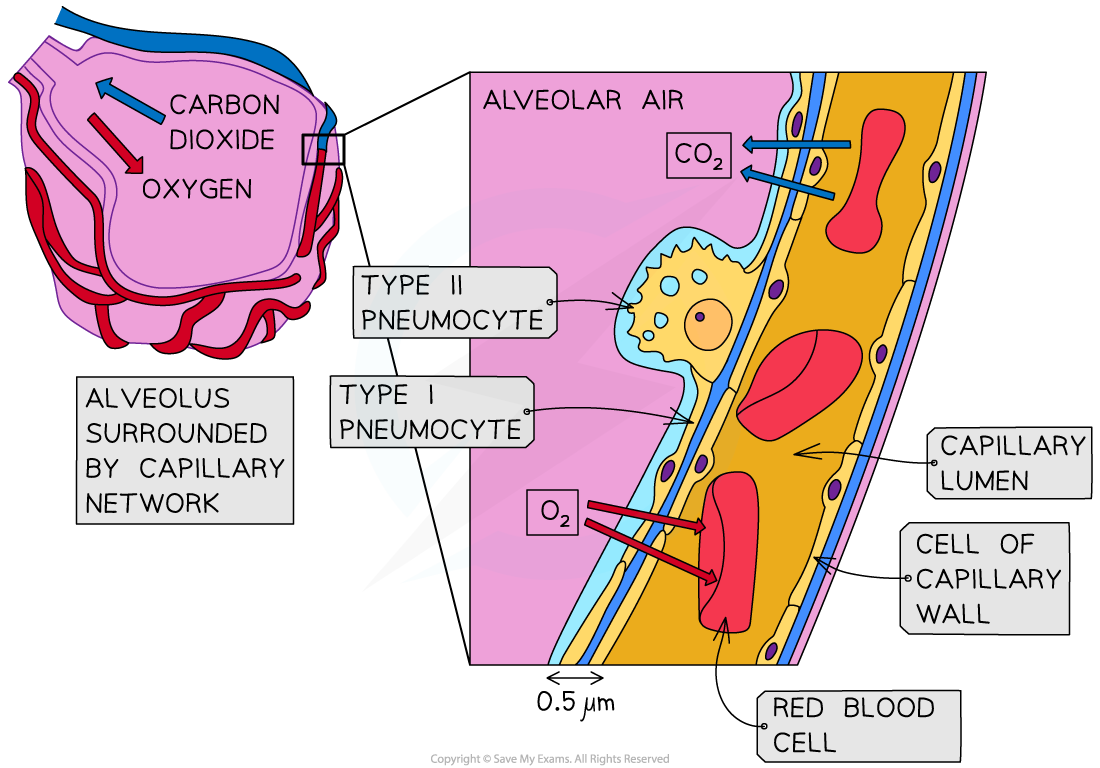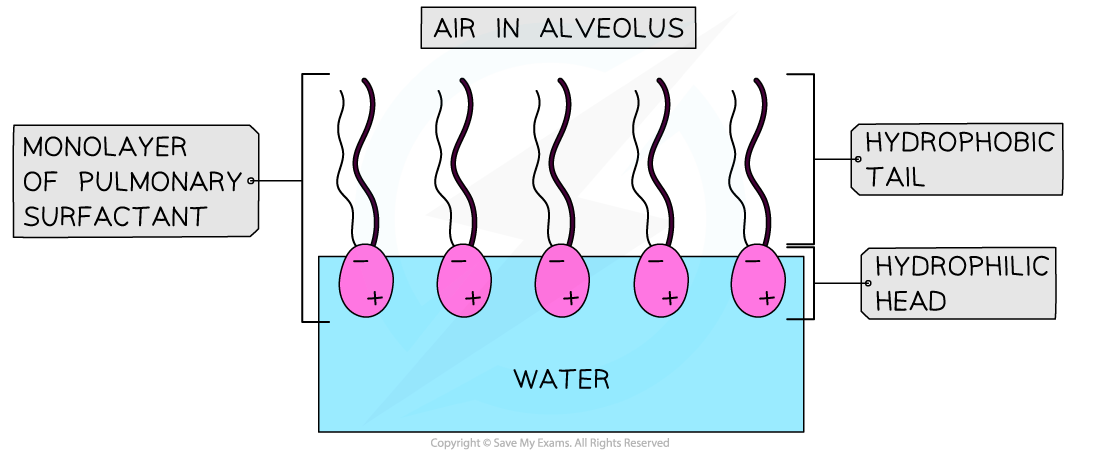Ventilation
- Ventilation can be defined as
- The replacement of older air in the lungs with fresh air from the body's external environment
- Ventilation is essential for the effective exchange of gases in the lungs
- The exchange of oxygen and carbon dioxide occurs between the alveoli and the capillaries in the lungs
- Gases are exchanged by simple diffusion which requires a concentration gradient
- This gradient is maintained by
- Ventilation
- The continuous flow of blood in the capillaries
The impact of ventilation
- Ventilation maintains concentration gradients of oxygen and carbon dioxide between air in the alveoli and blood flowing in adjacent capillaries
- Breathing in fresh air from the surrounding environment increases the concentration of oxygen in the air inside the alveoli
- Breathing out removes carbon dioxide
- This means that after ventilation, compared to the blood found in adjacent capillaries, the alveoli have
- Higher oxygen levels
- Lower carbon dioxide levels
- This ensures that oxygen continues to diffuse from the alveoli into the capillaries, while carbon dioxide continues to diffuse from the capillaries into the alveoli
- Both gases move down their concentration gradient

Ventilation maintains a concentration gradient between the air in the alveolus and the blood in the adjacent capillary
Type I Pneumocytes
- The alveoli are specifically adapted for gas exchange as they collectively have a very large surface area and the alveolar walls are only one cell thick which provides a short diffusion distance
- The alveolar walls are also known as the alveolar epithelium
- Type I pneumocytes are extremely thin alveolar cells which make up the majority of the alveolar epithelium
- They are adapted to maximise the rate of gas exchange by providing a short diffusion distance
- The capillary walls are also only one cell thick which means there is usually less than 0.5μm between the air in the alveoli and the blood, this maximises the rate of diffusion

The thin type I pneumocyte cells and the thin capillary walls provide a short diffusion distance to maximise gas exchange
Type II Pneumocytes
- Type II pneumocytes are rounded cells which secrete a solution that coats the epithelium of the alveoli
- They occupy a much smaller proportion of the alveolar epithelium than the type I pneumocytes; around 5%
- The solution released by type II pneumocytes contains pulmonary surfactant
- Pulmonary surfactant has hydrophobic tails and hydrophilic heads
- The molecules form a monolayer with the hydrophobic tails facing the alveolar air
- Pulmonary surfactant reduces surface tension, maintaining alveolar shape and preventing the sacs sticking together
- This prevents the alveoli, and therefore the lungs, from collapsing
- The solution also aids gas exchange
- The layer of moisture provided by the solution allows oxygen to dissolve before it diffuses into the blood
- Carbon dioxide diffuses from the moist surface before it is removed in exhalation

The type II pneumocyte cells in the alveoli produce a solution containing pulmonary surfactant which reduces surface tension

The alveolar epithelium is made up of type I and type II pneumocyte cells
Air Pathway
- Air moves in through the nose and mouth before it is carried to the lungs through the trachea
- The trachea is a tube supported by rings of cartilage which help to support its shape and ensure it stays open, while allowing it to move and flex with the body
- The trachea divides to form the two bronchi (singular bronchus) with walls also strengthened with cartilage and has a layer of smooth muscle which can contract or relax to change the diameter of the airways.
- One bronchus leads to each lung
- Bronchioles branch off the two bronchi to form a network of narrow tubes
- The walls of the bronchioles are lined with a layer of smooth muscle to alter the diameter of the bronchiole tubes
- This helps to regulate the flow of air into the lungs by dilating when more air is needed and constricting when e.g. an allergen is present
- Groups of alveoli are found at the end of the bronchioles
- Each alveolus is surrounded by an extensive network of capillaries to provide a good blood supply for maximum gas exchange

The main structures of the human gas exchange system
